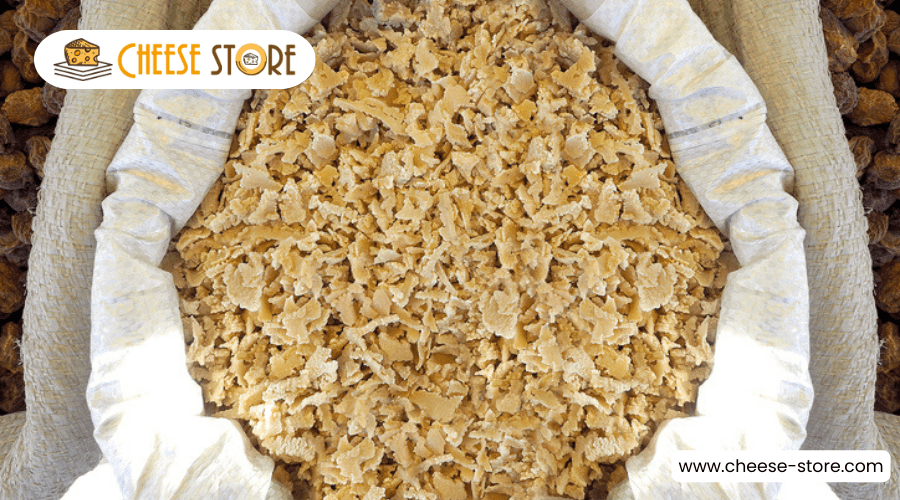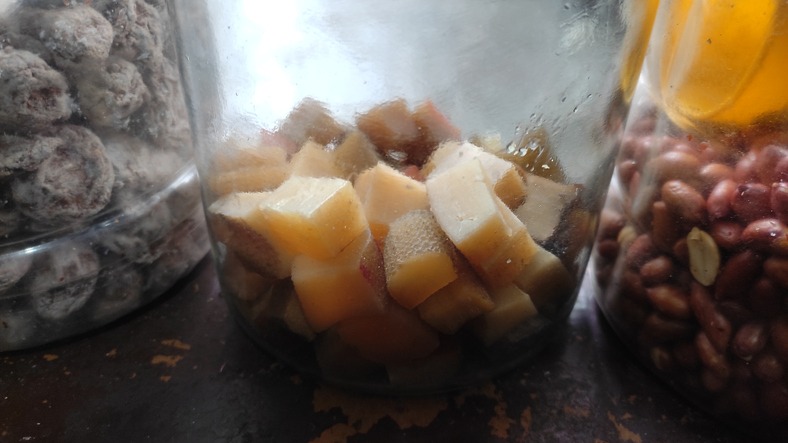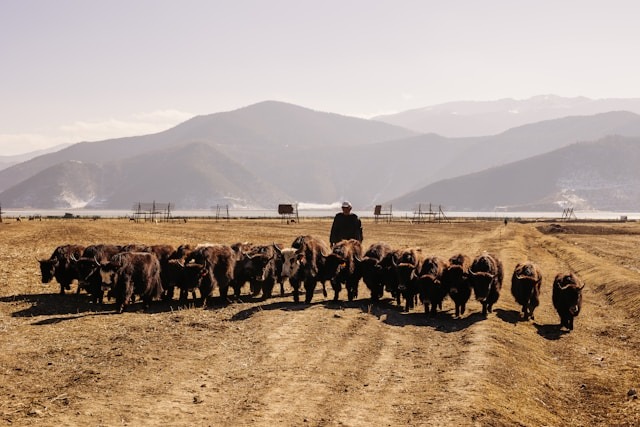In a world where cheese often plays second fiddle to wine, Tibet’s Chura Kampo is strumming its own unique tune, one that you’ve likely never heard before. This traditional Tibetan cheese, with its rich flavors and cultural significance, offers more than just a culinary experience—it’s a journey into the heart of Tibet’s heritage. As you explore Chura Kampo’s origins, production process, and its place in Tibetan society, you’ll uncover a story of resilience, tradition, and innovation. The question now isn’t whether you’ll be captivated by its history and taste, but how quickly you’ll want to incorporate it into your own culinary explorations.
Key Takeaways
- Chura Kampo, a dried cheese from Tibet, is rich in protein, calcium, and embodies centuries of culinary tradition.
- Its production involves unique methods like sun or oven drying, preserving nutritional integrity and offering diverse flavors.
- This cheese plays a crucial role in Tibetan rituals, festivities, and daily cuisine, symbolizing resilience and hospitality.
- Modern culinary innovations and global recognition have expanded Chura Kampo’s use beyond traditional Tibetan dishes to global cuisines.
The Origins of Chura Kampo
Chura Kampo, a Tibetan dried cheese with centuries-old roots, is made by artfully transforming buttermilk into various sun or oven-dried shapes, including balls and noodles, integral to Tibet’s culinary heritage. This unique cheese, central to the Tibet-related article, showcases a fascinating aspect of Tibetan culture and gastronomy. By boiling and cooling buttermilk, the process yields soft whey curds, which are then meticulously shaped into diverse forms such as wafers, beads, and the more traditional balls and noodles, before being dried to perfection.
Chura Kampo’s presence in traditional Tibetan dishes isn’t just a reflection of its timeless appeal but also highlights its cultural significance. For centuries, this cheese has been a staple, enriching meals and offering a glimpse into the ingenuity of Tibetan culinary practices. As you explore further into the world of Tibetan cuisine through this article, Chura Kampo stands out as a symbol of resilience and tradition, echoing the rich history and the vibrant culinary landscape of Tibet. Its role in Tibetan dishes underscores the importance of food as a carrier of cultural identity, making it an indispensable part of Tibet’s gastronomical legacy.
Traditional Production Process
To understand how Chura Kampo comes to be, you must first explore into its traditional production process, which starts with the careful boiling and cooling of buttermilk to form soft curds. These aren’t just any curds; they’re specially prepared to resemble cottage cheese, a texture essential for Chura Kampo’s unique taste and texture.
Once the curds have formed, the process doesn’t stop there. In Tibet, these whey curds, known locally as chura loenpa or ser, undergo a fascinating transformation. Artisans shape them into various forms – balls, wafers, noodles, or beads. This isn’t merely for aesthetics; each shape offers a different texture and taste experience, making Chura Kampo versatile in its culinary applications.
The final step involves drying these shaped curds. Depending on the available resources and weather conditions, they can be dried in the sun or an oven. This careful drying process is what solidifies Chura Kampo’s distinct flavor and longevity, allowing it to be a staple in Tibetan cuisine. Through this traditional method, Chura Kampo secures its place not just as a food item, but as a cultural symbol, embodying the rich history and culinary traditions of Tibet.
Nutritional Profile
After exploring the traditional production process of Chura Kampo, let’s examine its nutritional benefits, which contribute substantially to its value in Tibetan cuisine. This cheese made in the high altitudes of Tibet isn’t just a delight to your taste buds; it’s packed with an array of nutrients essential for your health.
- Protein and Calcium: Chura Kampo is a rich source of protein, crucial for muscle repair and growth, and calcium, necessary for strong bones and teeth. This cheese made traditionally guarantees you’re getting these nutrients in ample amounts.
- Low in Carbohydrates: If you’re watching your carb intake, this cheese made in Tibet is an excellent choice. Its low carbohydrate content makes it suitable for various diets, focusing on healthy fats and proteins.
- Rich in Healthy Fats: The cheese made from yak or cow’s milk in Tibet is rich in healthy fats, contributing to heart health and helping you feel fuller for longer.
- Phosphorus: Essential for bone health, phosphorus is another nutrient found in Chura Kampo. This cheese made the traditional way provides a good amount of this mineral, supporting your body’s ability to repair and maintain itself.
Choosing Chura Kampo means opting for a natural, unprocessed food that retains its nutritional integrity, thanks to its traditional production methods.
Cultural Significance
You’ll find that Chura Kampo isn’t just a cheese; it’s a proof to Tibet’s rich history and cultural identity. Its role in rituals and festivities underscores its significance beyond the dinner table, embodying the region’s culinary pride and communal spirit. This cheese connects you to centuries-old traditions, making it a beloved staple in Tibetan culture.
Historical Roots in Tibet
Chura Kampo’s rich tradition in Tibet serves as a proof of the region’s long-standing cheese-making heritage, symbolizing not just wealth and prosperity but also the warmth of Tibetan hospitality. This unique cheese, deeply rooted in Tibetan culture, tells a story of age-old practices and communal values.
- *Chura Kampo showcases Tibet’s rich tradition in cheese-making.*
- *It symbolizes wealth, prosperity, and the warmth of hospitality in Tibetan society.*
- *Traditional methods involve curdling yak milk and aging the cheese in natural settings.*
- *Chura Kampo is known for its rich, creamy flavor with tangy undertones.*
This cheese isn’t just a treat; it’s a attestation to the enduring spirit of Tibetan culture and its culinary heritage.
Rituals and Festivities Role
Building on its rich tradition, Chura Kampo’s role extends into Tibetan rituals and festivities, highlighting its cultural significance. In this cheese-related article, you’ll uncover how Chura Kampo isn’t just a culinary delight but a symbol of wealth and prosperity. During Tibetan festivals, exchanging this unique cheese signifies deep-rooted cultural traditions and embeds a sense of unity and respect among participants. It plays an integral role in traditional ceremonies, where offering Chura Kampo represents hospitality and warmth towards guests. This practice is steeped in Tibetan folklore, carrying significant cultural meaning and symbolism. As you investigate further into the world of Chura Kampo, you’ll find it’s more than just cheese; it’s a vessel of cultural heritage and communal values.
Identity and Culinary Pride
As we delve into the heart of Tibetan culture, it becomes clear that Chura Kampo isn’t just a source of nourishment; it’s a beacon of identity and culinary pride. This hard cheese embodies more than just a unique flavor; it’s a symbol deeply woven into the fabric of Tibetan life.
- Symbolizes wealth and prosperity, reflecting the community’s aspirations and successes.
- Exchanged as gifts during festivals, signifying its role in strengthening social bonds.
- Integral to Tibetan rituals, highlighting its spiritual and cultural importance.
- Represents hospitality and warmth, mirroring the fundamental values of Tibetan society.
Chura Kampo is more than hard cheese; it’s a sign of the rich heritage and enduring pride of the Tibetan people.
Culinary Uses
As you explore the culinary uses of Chura Kampo, you’ll find it’s not just a staple in traditional Tibetan recipes; it’s also sparking modern culinary innovations. It’s fascinating how its versatility, from being grated over noodles to enhancing butter tea, opens up a myriad of possibilities for both traditional and contemporary dishes. Let’s see how chefs and home cooks alike are incorporating this unique cheese into their culinary repertoire.
Traditional Tibetan Recipes
Delving into traditional Tibetan recipes, you’ll discover how Chura Kampo, a unique cheese, elevates dishes like Thukpa and Yak Cheese Momos with its rich and creamy flavor. This cheese is not just an addition but a centerpiece in many Tibetan meals, showcasing the diverse ways cheeses include in daily culinary practices.
- Grated over noodles or soups, Chura Kampo adds a rich and creamy dimension.
- It’s handcrafted by Tibetan herders, pressed into shapes with wooden molds, adding authenticity.
- Served with Tsampa, it complements the staple roasted barley flour, enriching the flavor.
- Enhances butter tea, providing a unique taste experience that’s deeply rooted in Tibetan culture.
Exploring these recipes, you’ll appreciate the culinary traditions and the role of Chura Kampo in Tibetan cuisine.
Modern Culinary Innovations
Chura Kampo’s versatility shines in modern culinary innovations, where chefs creatively incorporate its unique flavor into contemporary dishes. Beyond its traditional role in Tibetan noodles and soups, you’ll find it grated over a variety of creations, enriching them with a rich and creamy taste. Its bold and distinct flavor, marked by unique tangy undertones, transforms ordinary recipes into culinary delights. Imagine it paired with tsampa in innovative snacks or enhancing the savory notes of modern fusion dishes. Even in beverages, it complements butter tea, offering a revitalizing twist on a classic. As you explore these new culinary uses, remember, this article is a stub, hinting at the vast potential of Chura Kampo in the culinary world.
Preservation Techniques
To extend its shelf life, Chura Kampo undergoes a unique preservation process involving drying in the sun or an oven. This traditional Tibetan technique is not just about keeping the cheese edible for longer; it’s about enhancing its qualities and ensuring it can be enjoyed far beyond its region of origin. By embracing these methods, you’re not only preserving a piece of culinary heritage but also potentially helping Wikipedia by expanding the knowledge base around unique preservation techniques.
- Drying in the sun is a natural method that relies on Tibet’s high altitude and strong sunlight to slowly remove moisture from Chura Kampo, concentrating its flavors and extending its shelf life without the need for refrigeration.
- Oven drying offers a reliable alternative in areas with less sunlight, ensuring that Chura Kampo can still be preserved and enjoyed year-round, regardless of external weather conditions.
- Extended shelf life means that Chura Kampo can be stored for long periods, making it a versatile ingredient in various dishes or a durable travel companion.
- Enhanced flavor profile as the drying process intensifies the cheese’s richness, adding depth to its taste that is appreciated by cheese lovers.
Modern Adaptations
In recent years, producers have innovatively adapted Chura Kampo by incorporating cow’s milk or a blend of yak and cow’s milk, enhancing its appeal to a broader audience. This modern twist not only retains the unique flavor of the traditional cheese but also introduces a creamier texture that’s winning hearts worldwide. As you dive deeper into this article, you’ll discover the lengths to which artisans go to keep Chura Kampo relevant in today’s culinary landscape.
| Innovation | Benefit |
|---|---|
| Blended Milk Types | Broader appeal & creamier texture |
| Added Flavorings | Unique variations & enhanced taste |
| Advanced Production | Diverse textures & flavors |
| Vacuum-Sealed Packaging | Easier storage & transportation |
The addition of herbs, spices, or other flavorings has led to an exciting range of Chura Kampo varieties. Each variant offers a unique taste profile, catering to the diverse palettes of cheese lovers. Innovative production methods have introduced different textures and flavors, making Chura Kampo more versatile than ever. The introduction of vacuum-sealed packaging has revolutionized how this cheese is stored and transported, ensuring it reaches enthusiasts in perfect condition. Contemporary chefs are now experimenting with Chura Kampo in fusion dishes, marrying traditional Tibetan flavors with global cuisines, further solidifying its place in the modern culinary world.
Global Recognition
As this unique Tibetan cheese, Chura Kampo, garners worldwide acclaim, you’ll find its rich flavors and cultural significance enchanting a global audience. Originating from the high altitudes of Tibet, this dried cheese is making waves far beyond its homeland, thanks to its distinctive taste and the traditional methods used in its production.
Here’s why Chura Kampo is capturing the hearts of cheese lovers globally:
- Unique Production Process: The traditional technique of curdling yak milk and sun-drying forms the backbone of Chura Kampo’s uniqueness.
- Rich Flavor Profile: Its tangy undertones paired with a creamy texture offer an unparalleled taste experience.
- Cultural Significance: More than just a cheese, Chura Kampo symbolizes wealth, prosperity, and hospitality in Tibetan culture.
- Cheese Pairings: Experimenting with Chura Kampo in various cheese pairings is introducing food enthusiasts to new culinary delights.
As you explore into the world of Chura Kampo, you’re not just tasting a cheese; you’re immersing yourself in the rich heritage of Tibet. This cheese’s global recognition is a confirmation of the timeless appeal of authentic, culturally rich foods that tell a story.
Conclusion
In exploring Chura Kampo, you’ve journeyed through the heart of Tibetan culture, from its ancient origins to its place on global plates today. This unique cheese, with its rich flavors and diverse textures, not only nourishes the body but also carries the essence of Tibetan hospitality and heritage. Whether enjoyed traditionally or through modern adaptations, Chura Kampo invites you into a world of culinary delight, symbolizing prosperity and unity. It’s more than just cheese; it’s a taste of Tibet’s soul.




